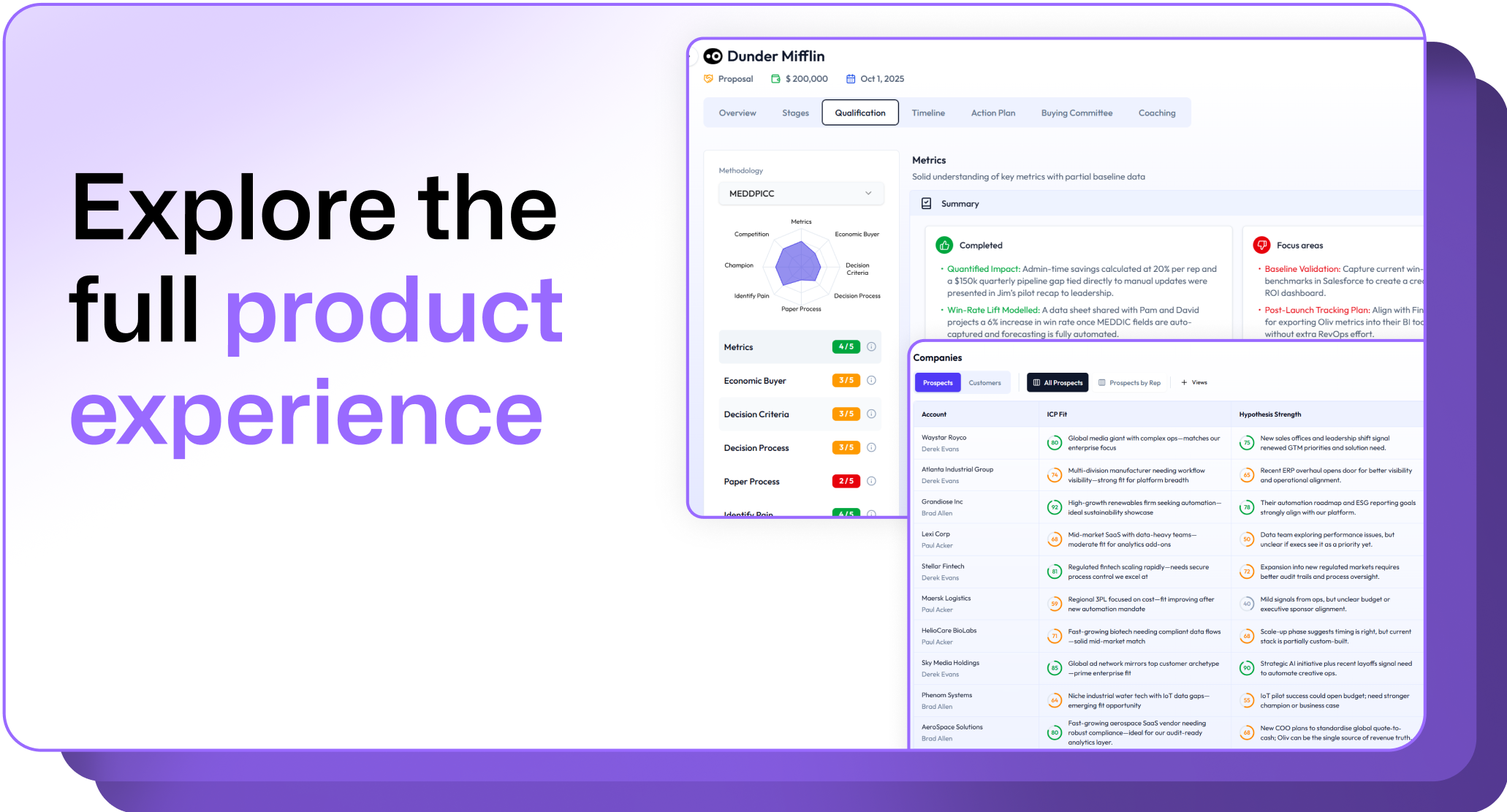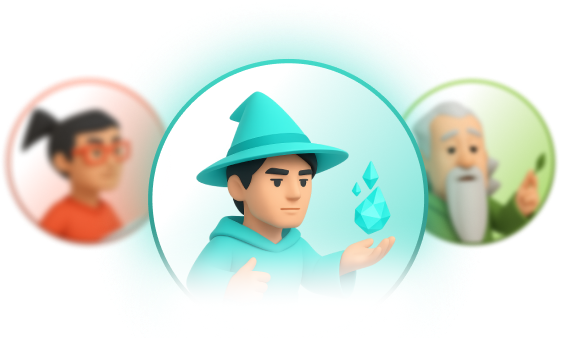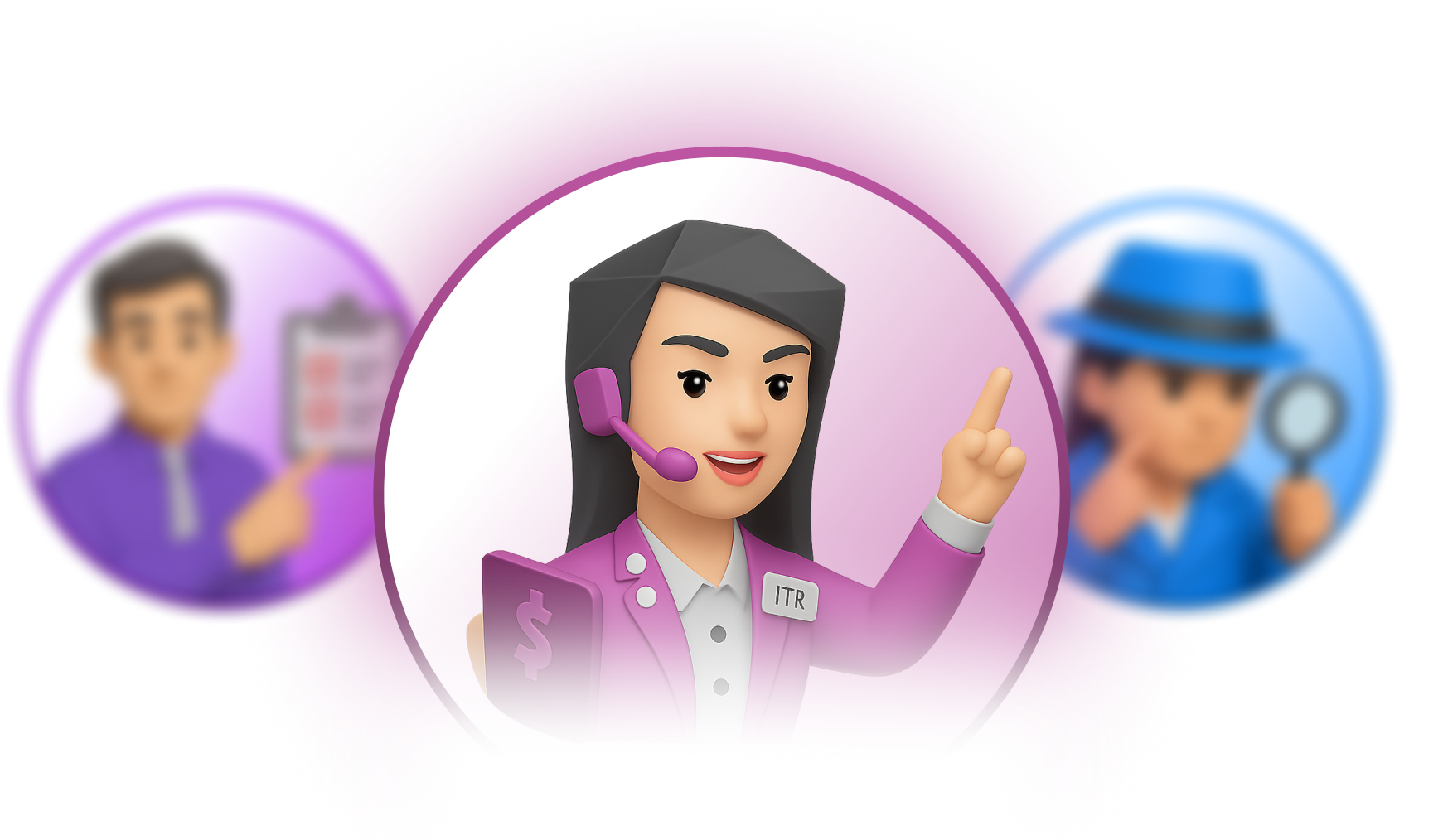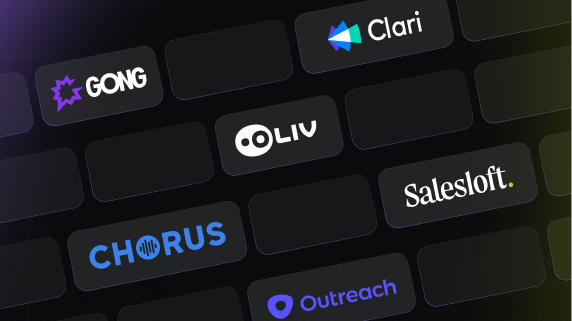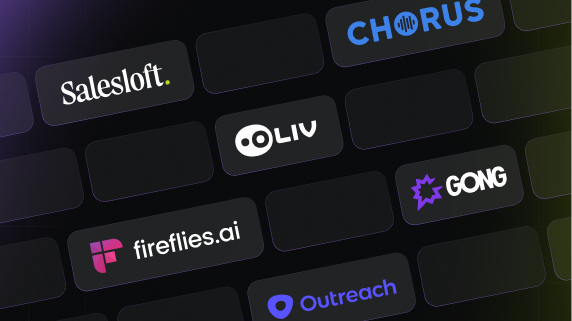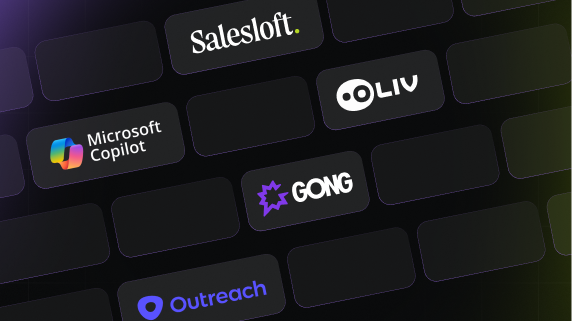You need to email a potential lead, but the blank screen is daunting. Do you start from scratch, taking up precious time? Or do you dig through old emails to find something you can adapt? Every minute counts in sales, and you know there must be a better way.
That is where sales email templates come in. Research shows prospects/clients open only 23.9% of all sales emails. So, if you don’t want your emails left unopened, you need effective email templates for every sales funnel stage.
This blog will share tried-and-tested sales email templates for various sales cycle stages. The templates are designed to get responses from the initial cold outreach to follow-ups and even reactivation emails.
Basics of sales email templates that get responses
Before getting into sales email templates, let us review some tips for writing sales emails. These are almost like building blocks; you can use them in different permutations and combinations to create engaging and lead-generating emails:
1. Let it be simple
Clear, concise, and to-the-point language ensures your message is easily understood and drives engagement among readers. If your message is easy to digest, prospects are more likely to respond or take action. Oliv can craft simple, straightforward, value-focused AI-generated sales emails customized for different prospects. Finally, review and edit once before sending.
2. Begin by introducing yourself
A brief introduction goes a long way in starting a client relationship. Mentioning your company and role establishes trust and increases engagement. Look at their company website or LinkedIn profile for valuable insights to help you personalize the email. Alternatively, let Oliv handle your pre-meeting research while you focus on mentally preparing yourself for the call.
3. Prioritize a good subject line
In a virtual space like your prospect’s email inbox, the subject line is that stellar first impression determining whether your prospect will open the email. Experiment with different subject lines and track your open rates to see what works best with your audience. Trying to mail a client to whom you have spoken previously? Let Oliv review its automated call summaries and suggest the perfect subject line tailored to their pain points.
4. Always include a CTA
Sales email templates need a clear direction. What action do you want the prospect to take? This is where a strong CTA (call to action) comes into play. Without it, your recipient might be clueless about what to do next, and your effort goes down the drain.
5. Do not forget to follow up
Persistence is important in closing deals, yet it is unbelievable how 70% of sales reps drop the ball after sending a single email. If your initial email was missed or forgotten, a follow-up brings it back to the top of their inbox. It also shows you are genuinely interested in connecting and providing value.
Still, you don’t want to come across as too pushy or too laidback, so space your follow-ups a few days apart. Also, know when to stop. Sales management tools like Oliv can help streamline your follow-up process, letting you set reminders and schedule personalized follow-up sales email sequences in advance.
9 types of sales email templates that work
Think of these templates as your starting blocks. They give you a solid framework, saving time and ensuring you include all the essential elements. With some customization, you can use these templates throughout the sales process to boost your results.
1. Cold emails
Cold emails are the first point of contact with a potential lead who has not expressed interest in your product or service yet. They are like knocking on a stranger’s door—you need a compelling introduction and a reason for them to open up to you.
Subject line: Quick question about [Prospect’s Company]
Body:
Hi [Prospect’s First Name],
I was checking out [Prospect’s Company] and really like your work [mention something specific you noticed]. I often work with companies similar to yours, and many struggle with [pain point].
Our [Product/Service] helps businesses like yours with [key benefit], making [pain point] easier to manage.
Would you have 15 minutes for a quick call to see if we might be a good fit?
Let me know what works for you,
[Your Name]
[Phone number]
✅ Why such sales email templates work:
Subject line:
- The word “quick” implies a low-commitment ask, and mentioning their company makes it feel personalized.
- It does not come across as an immediate sales pitch, encouraging them to open the email.
Body:
- Builds rapport by complimenting their work and showing you have done your research.
- Smoothly transitions into a common challenge, making it relevant to them.
- Concisely states the key benefit you offer and how it directly addresses the pain point.
- Clear CTA asks for a brief call, offering a low-pressure way to take the next step.
2. Prospecting emails
Prospecting emails are sent to people who have shown some level of interest before. They may have downloaded a resource from your website, attended a webinar, or interacted with you at an event. These emails will rekindle the connection and move them further down the sales funnel.
Subject line: Hey, did you like [resource/event]?
Remember that [event] you attended?
Body:
Hi [Prospect Name],
I hope you are doing well. I noticed you [mention how they reached out to your business—downloaded an ebook, attended a webinar, or others] a little while ago.
Did you find the [resource/event] valuable? I would love to hear your thoughts.
Also, since you showed interest in [topic], you might like to know that we help companies like yours with [key benefit your solution provides]. Would you be open to a quick 10-minute chat?
Let me know if you have any time this week.
Best,
[Your Name]
[Phone number]
✅ Why such sales email templates work:
Subject line:
- Directly references their past interaction, instantly grabbing their attention.
- It makes them curious about why you are reaching out and encourages them to open the email.
Body:
- Re-establishes that you remember their interest and value their feedback.
- Naturally introduces your solution by linking it to the topic they expressed interest in.
- Soft CTA suggests a brief conversation, making it a low-pressure way to re-engage.
3. Sales pitch emails
Sales pitch emails are where you directly introduce your product or service and explain how it solves the prospect’s pain points. It is about clearly presenting your value proposition and making a solid case for why they should consider working with you.
Subject line: Quick question about [goal]
Body:
Hi [Prospect Name],
I was browsing your website and noticed you are focused on [specific goal]. That is great. It got me thinking- we often help companies like yours achieve similar goals.
We offer a solution specifically designed to help businesses in your industry with:
- [Goal 1- a brief explanation of how it helps]
- [Goal 2- a brief explanation of how it helps]
- [Goal 3- a brief explanation of how it helps]
Would you have 15 minutes to chat to see if there might be a fit? I would love to learn more about your plans for [business area].
Thanks,
[Your Name]
[Phone number]
✅ Why such sales email templates work:
Subject line:
- Directly addressing a relevant goal clarifies that the email is relevant to their priorities.
- The short nature of the subject line promises a quick and focused read.
Body:
- Acknowledges their website and specific goal, showing that you have done some research.
- It positions you as a potential partner who understands their industry challenges.
- Lists key benefits linked to specific goals, making it easy to see how you can help.
- Soft CTA suggests a brief call to learn more.
- Emphasizes learning about their business area, focusing on collaboration rather than hard selling.
4. Follow-up emails
Sometimes, people miss your call or forget about an email. A follow-up email is like a friendly reminder sent after initial contact if you have not received a response. The goal is to stay on the prospect’s radar without being pushy.
Subject line: Thought you might like these resources on [pain point]
Body:
Hi [Prospect’s First Name],
I hope you are doing well. I know you are interested in [pain point], so I wanted to share these helpful blog posts I came across:
- [Resource 1]
- [Resource 2]
- [Resource 3]
They cover [briefly mention what makes the resources valuable]. Let me know what you think.
Would you also be open to a quick chat about how [Your Company] could help with [pain point]?
Thanks,
[Your Name]
[Phone number]
✅ Why such sales email templates work:
Subject line:
- Immediately offers something helpful related to the prospect’s known pain point.
- It does not come across as a pushy follow-up but as sharing something valuable.
Body:
- Maintains a friendly tone and acknowledges that the prospect might be busy.
- Share helpful resources before directly asking for a conversation, showing that you prioritize their needs.
- Soft CTA smoothly transitions into a soft ask, focusing on how your company can help address the pain point.
- It is short and easy to read, respecting the prospect’s time.
5. Upselling/cross-selling emails
Upselling and cross-selling emails target existing customers, suggesting additional products or services that complement their current purchase. They are meant to increase customer lifetime value and provide ongoing solutions.
Subject line: I thought you might like this, too.
Body:
Hey [Prospect’s Name],
I hope you are enjoying [part of the purchase]. Since we are already working together, I thought I would share a few other things we offer that might also be helpful:
- [Feature 1- a brief explanation of why it complements their current solution]
- [Feature 2- a brief explanation of why it complements their current solution]
If any of these could make things even easier, let's chat. I'd be happy to give you a quick overview.
Best,
[Your Name]
[Phone number]
✅ Why such sales email templates work:
Subject line:
- Creates a sense of curiosity without being too sales-y.
- The word “too” implies the prospect already likes something you offer, establishing a positive association.
Body:
- Build rapport by mentioning their current use of your solution.
- Highlights benefits of additional features, explaining how they complement what the customer already has.
- Invite them to a conversation with you for a demo, making it low-pressure.
6. Reminder emails
Reminder emails are like helpful notes—a quick nudge to inform prospects about an upcoming deadline, event, or other useful information. Naturally, they must be short, direct, and aim to encourage the prospect to act.
Subject line: Quick reminder about [goal]
Body:
Hi [Prospect’s Name],
I am following up on my previous email about helping your team achieve [goal].
I know [increasing X, decreasing Y] can be a real challenge. That is where [Your Company] comes in. We offer tools specifically designed for [business area], including:
- [Feature 1 and brief explanation of how it helps]
- [Feature 2 and brief explanation of how it helps]
- [Feature 3 and brief explanation of how it helps]
Would you be open to a quick 15-minute call?
Let me know what works for you.
Thanks,
[Your Name]
[Phone number]
✅ Why such sales email templates work:
Subject line:
- Instantly informs the prospect about the email’s purpose, increasing the chance of it being opened.
- Reminding them of their goal creates a sense of urgency and highlights why they reached out in the first place.
Body:
- Shows respect for their time and avoids feeling like a repetitive blast email.
- Briefly restates the pain point, keeping their problem top-of-mind.
- Provides a short reminder of the features and benefits, directly linking them to solving their challenge.
- Repeats the offer of a quick call, giving the prospect a clear way to take the next step.
7. Thank you emails
Saying “thank you” is always lovely. ‘Thank you’ emails show appreciation to someone who took the time to chat with you, even if they did not buy anything right away.
Subject line: A little thank you for being awesome.
Body:
Hi [Customer Name],
Thank you for being a loyal customer. We really appreciate your support.
As a small token of our appreciation, we would love to offer you [discount amount] off your next purchase of [product/service]. Just use the code [offer code] at checkout.
Let us know if you have any questions. Thanks again for being part of our community.
Best,
[Your Name]
[Phone number]
✅ Why such sales email templates work:
Subject line:
- The playful and informal tone immediately catches their eye and sets it apart from other emails in their inbox.
- Focusing on “being awesome” creates a sense of appreciation beyond transactional interactions.
Body:
- The opening line directly and sincerely conveys thanks for their loyalty.
- Offers a discount as a tangible way to show appreciation, incentivizing future engagement.
- Keeps sales communication channels open by encouraging them to reach out with any questions.
- Maintains a casual and positive tone, strengthening the customer relationship.
8. Last emails
Only some people are ready to buy immediately, which is okay. A last email is a polite way to say goodbye for now, but let them know you are always happy to chat if they change their mind in the future.
Subject line: Re: [Original Subject Line]
Body:
Hi [Prospect’s Name],
I understand things get busy, and the timing may not be suitable for [Product/Service]. I do not want to bother you, but before I close things out on my end, I wanted to leave you with a few resources that might still be helpful:
- [Resource 1]
- [Resource 2]
If your situation changes and you would like to discuss [pain point] in the future, please do not hesitate to let me know.
Best regards,
[Your Name]
[Phone number]
✅ Why such sales email templates work:
Subject line:
- Provides instant context for the prospect, reminding them of the previous conversation thread.
- The “Re:” clarifies this is related to previous discussions, not a new sales pitch.
Body:
- Shows empathy by recognizing that their timing might not be correct, avoiding pressure.
- Continues to offer helpful resources even though the immediate sale is not happening, leaving a positive impression.
- Invites them to reach out in the future, emphasizing that you are available for future conversations.
- The tone is polite and understanding, valuing their time.
9. Reactivation emails
Reactivation emails are like friendly waves to past customers who have gone inactive or have not engaged in a while. They are a chance to remind them why they loved your product or service in the first place, often by offering special incentives or highlighting new developments.
Subject line: We have got something new to help with [customer problem]
Body:
Hi [Customer Name],
I hope all is well. It has been a bit since we last connected, so I wanted to check in and see how things are at [Prospect’s Company].
We recently launched a new feature- [briefly describe the feature]- which could significantly help [specific pain point it addresses]. Would you like a quick 15-minute demo to see it in action?
Let me know a time that works for you.
Best,
[Your Name]
[Phone number]
✅ Why such sales email templates work:
Subject line:
- Provides instant context for the prospect, reminding them of the previous conversation thread.
- The “Re:” clarifies this is related to previous discussions, not a new sales pitch.
Body:
- Acknowledges the time passed, making the outreach feel friendly rather than accusatory.
- Highlights a new feature directly relevant to their previous pain point, showing improvement.
- Invites them to a demo, providing a low-pressure way to re-engage and see your new value.
- The email is short and to the point, valuing the customer’s time.
Make the best out of sales email templates
Sales email templates help you organize so you do not have to start from scratch every time you write. But remember, the goal is not just about using any template—it is about making it work for you.
Let us recap what we learned about sales email templates:
- Keep it concise. People have short attention spans. Get to the point quickly.
- Personalization is vital. Show your prospects you understand their specific needs.
- Proofread. Nothing hurts your credibility like a typo.
- Focus on the prospect’s pain points. How does your product or service solve their problem?
- Always include a clear CTA. Tell them the next step you want them to take.
Oliv can help you personalize your sales email templates, save time on research, and write better emails faster. Want to see it in action? Book a free demo today.
